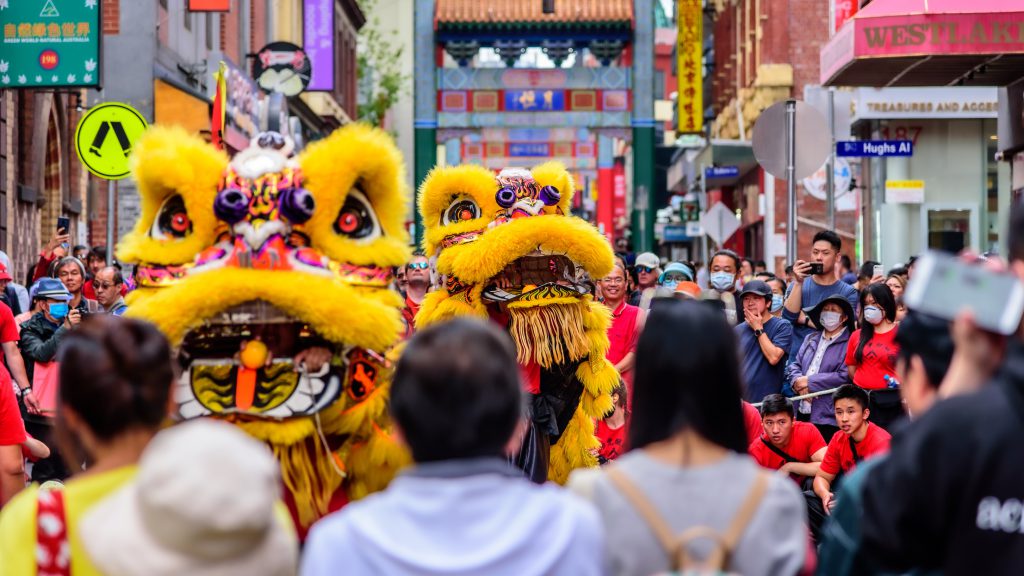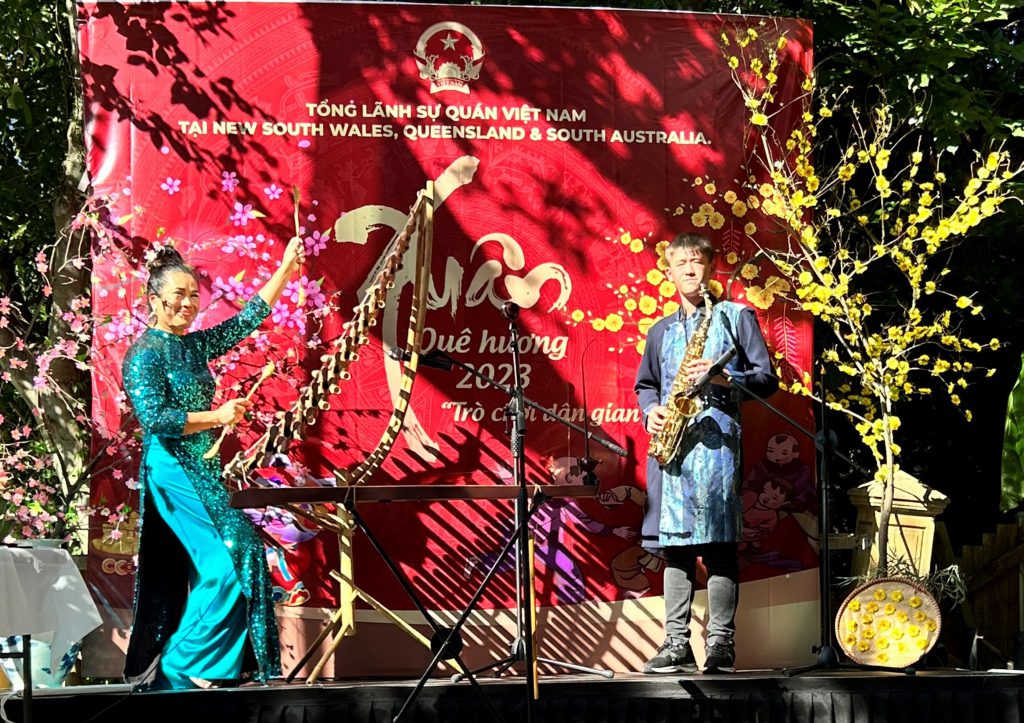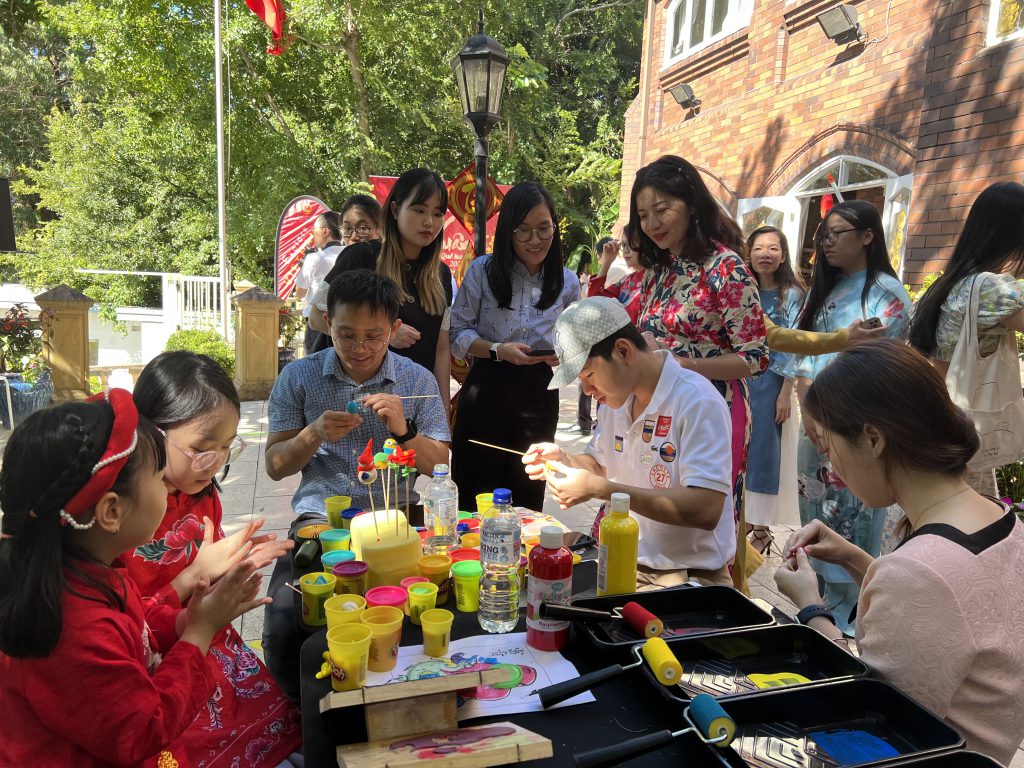Prof. Dr. Trinh Sinh
Tet, originating from the word “Tiết” which is akin to “season” or “weather”, marks the transition into spring—a time of refreshing coolness, when trees and plants sprout new growth, and all of nature brims with life. Perhaps this is why, for thousands of years, Vietnamese people have embraced Tet, indulging in festivities with the spirit of “No matter where you trade or dwell, when Tet comes, let’s head home and celebrate”.

Tet brings about the largest migration of the year. The destination is one’s hometown, with everyone aiming to arrive home before the stroke of New Year’s Eve. This triggers frantic movement, causing traffic jams on major routes days before and after Tet. In the past, people accepted “hunger throughout the year” but hoped for “satiety for the three days of Tet”.
Nowadays, nobody goes hungry, especially when delicious dishes can be delivered right to your doorstep with a single phone call. Tet’s essence lies in the consciousness of each individual, in spirituality, family reunions, gatherings with friends, and in lighting incense to pay homage to the ancestors… This is the sacred nature of Tet!
For Vietnamese people living far from home, the sanctity of Tet is magnified manifold. To this day, there are over five million Vietnamese residing abroad. Whether establishing a career or pursuing education overseas, they all share a common longing for their homeland, especially during the traditional Tet holidays. The arrival of Tet is also a time for gatherings, and a moment when national identity is most vividly expressed.

I had the opportunity to celebrate Tet in Dorchester, by the beautiful shores of Massachusetts Bay, near the US city of Boston, an area with a large Vietnamese community. Here, almost every household has an ancestral altar, and the scent of incense is everywhere during the three days of Tet. New Year’s Eve offerings must include all the essentials, like Chung cakes or Tet cakes, gio cha (Vietnamese sausage), boiled chicken, and fried spring rolls, just like in our homeland. Vietnamese people gather in the spirit of “a stranger nearby is better than a far-away relative”. For example, in the US, Vietnamese communities are concentrated in states like California, Texas, Washington, and Florida.
In Australia, places like Sydney’s Bankstown, Cabramatta, Marrickville, etc. have big Vietnamese communities. Community members frequent stores, restaurants, and markets run by their compatriots, helping each other in business. They can also speak Vietnamese in these venues, which is especially useful for elderly immigrants who are not fluent in the local language.
The richly nuanced and meaningful Vietnamese language is also a heritage that Vietnamese people have carried everywhere. As a cultural expert once said: “As long as the Vietnamese language survives, the spirit of Vietnam endures.” Vietnamese people who live far from their homeland make efforts to teach the language of their ancestors to the generations born abroad, as a way to maintain their national identity.

Migrants have also brought Vietnamese pagodas to all corners of the world. Wherever there is a Vietnamese community, a pagoda is erected and statues are raised. On Tet, Vietnamese often visit these pagodas to reconnect with the spiritual world. Thus, the pagoda becomes a symbol of the Vietnamese spirit in a foreign land. A simple, rustic Vietnamese pagoda, nestled among towering buildings, remains a part of the Vietnamese consciousness.
It’s not only individual Vietnamese families but also community organizations that are keenly aware of their roots. In the midst of a commercial center in the suburbs of Sydney, where many Vietnamese reside, stands a Ngoc Lu bronze drum, about 800 kg in weight and approximately two meters in diameter, placed upon an elegant black marble pedestal. The drum’s surface is adorned with patterns of stilt houses, flying birds, deer, a person playing a drum, dancers, etc. The Lunar New Year is also an opportunity for Vietnamese people to showcase traditional Vietnamese ao dai festivals, dragon dances, fairs, flower markets, Chung cake-making contests, tug-of-wars etc. to other ethnic groups, thereby drawing international friends into the celebrations.










